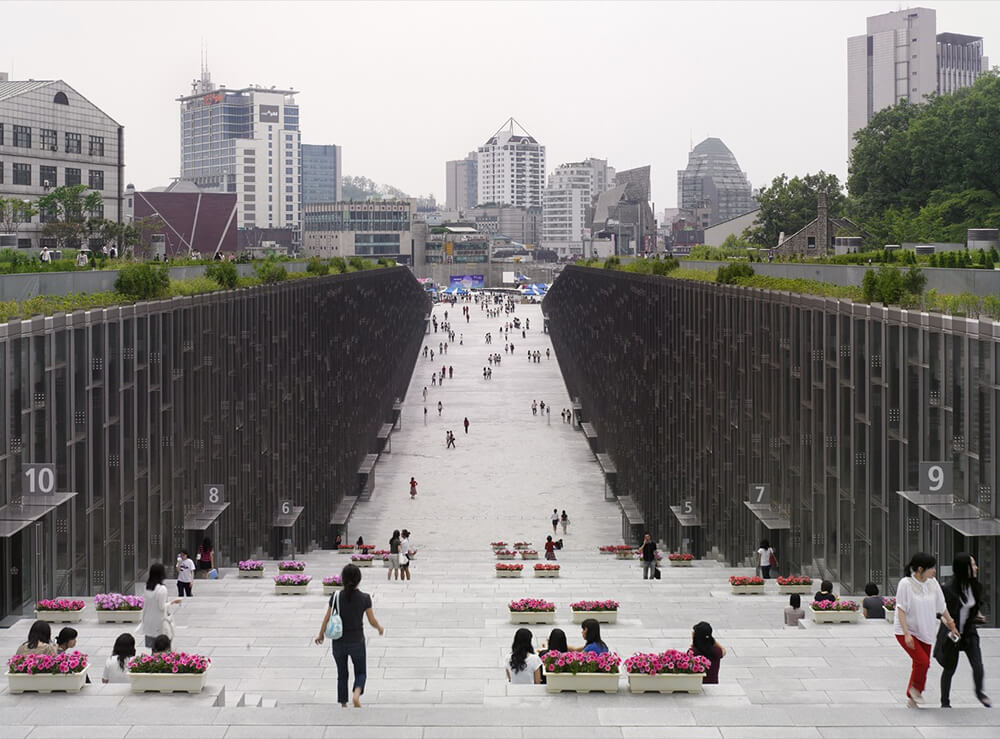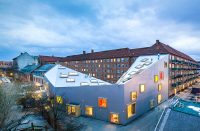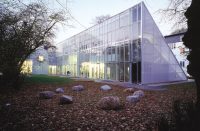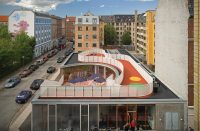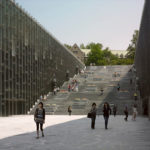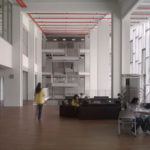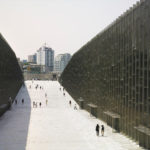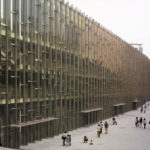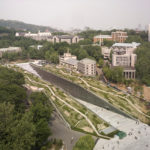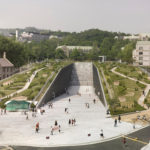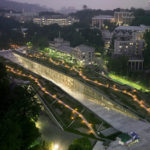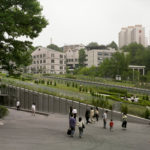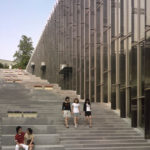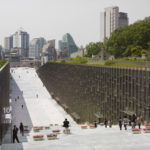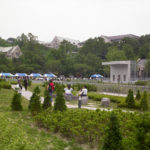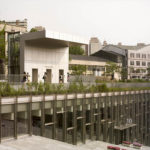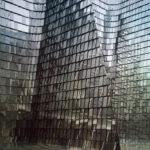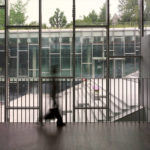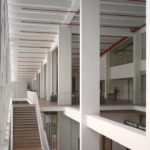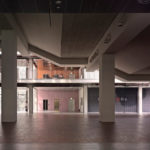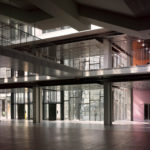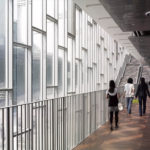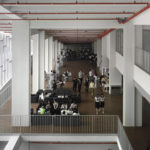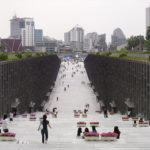Architect(s): Dominique Perrault Architecture
Address: 52 Ewhayeodae-gil, Daehyeon-dong, Seodaemun-gu, SEOUL, South Korea
Latitude/Longitude: 37.560413,126.945842
Photographs: André Morin
A larger than site response, an urban response, a global landscaped solution which weaves together the tissue of the EWHA campus with that of the city was necessary in regards to the complexity of the immediate site through its relationship to the greater campus and the city of Shinchon to the south. A new topography is created with this gesture called the campus valley, together with the sports strip, which impacts the surrounding landscape in a number of ways.
Many things at once synthesize the Sports Strip, like the Valley. The Ewha campus found a new gateway, a place for daily sports activities, a grounds for the special yearly festivals and celebrations, and an area which truly brings together the university and the city. Most importantly, it can be seen as a place for all, animated all year long.
The life of the university to the inhabitants of Shinchon, and vice-versa is presented through the sports strip, like an horizontal billboard. Pedestrian movement and flow through the site make their celebration, when one enters the sports strip. A new “Champs Elysées” invites the public into the site carrying students and visitors alike through the campus center northwards, bringing together the different levels of the site.
The most remarkable quality of the campus is perhaps its pastoral nature. It should be permitted to grow outwards, or inwards in this case, covering the campus center with trees, flowers, and grass. The park is re-drawn. A special place for gathering, conducting informal classes, and simply relaxing is created as a result of this, making an idyllic garden. Blurring the distinction between old and new, building and landscape, present and past, it is evident that there is a notion of weaving together the campus.
A new seam slices through the topography revealing the interior of the EWHA campus center. A variety of activities unfold in a hybrid place, a formed void. Recalling les Champs Elysees or the Campidiglio in Rome, the campus is like an avenue, gently descending, controlling the flow of traffic, leading to a monumental stair carrying visitors upwards.
– Access to the various departments exist through an entry court.
– There is a node, or a point on a trajectory to another destination.
– When students gather after class to discuss their views, they have a forum to exchange ideas.
– The cafeteria spills out creating a real “place” to stop and relax with a piazza.
– An outdoor theatre, as the stair can be used in an amphitheatre like fashion.
– Indoor gallery events can push outwards with a sculpture garden.
The New EWHA campus center is allowed to inevitably weave itself into the landscape sometimes a building, sometimes a landscape, sometimes a sculpture with precisely this flexibility (conceptual and real).
Text description provided by the architects.
Partners: Baum Architects – Seoul
Consultant: Jeon and Lee Partners – Seoul (structural engineer), HIMEC – Seoul (mechanical engineer), CG E&C – Seoul (civil engineer), CnK Associates- seoul (landscape)
Area: 70000m²
Contributed by Dominique Perrault Architecture

